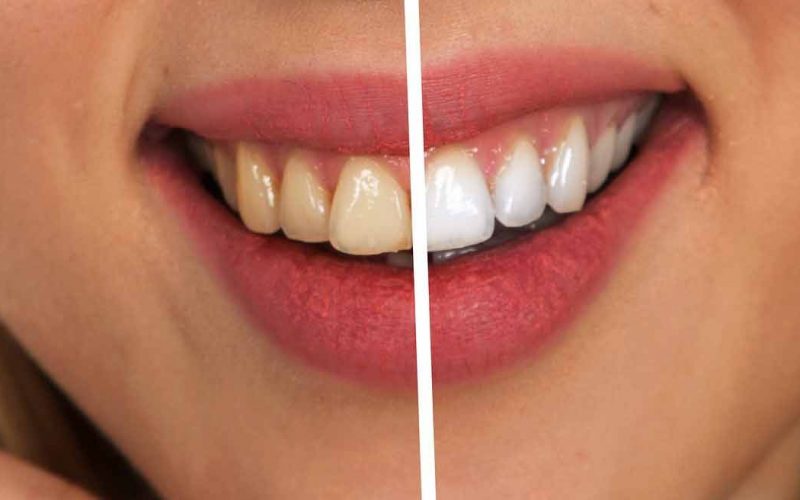Table of Contents Show
What is Fluorosis?
Fluorosis is a dental condition, in which there is an alternation in the appearance and composition of the enamel as a result of excessive exposure of fluoride (mostly in water) during the tooth development of young children.
Children are at risk of developing dental fluorosis, especially during development of permanent teeth. Adults or children above the age of 8 have lower chances of developing fluorosis.
There are various ways a child may develop fluorosis. An excessive amount of fluoride is consumed during toothpaste, drinking water, oral fluoride supplement, and fortified foods.
Navigation:
More on Fluorosis
- Symptoms of Fluorosis
- Why Diagnose Fluorosis?
- Fluorosis Treatment
- How to Avoid Fluorosis?
- Importance of Fluoride in your Diet
DIY test for Fluoride in Water
What are the symptoms of Fluorosis?
Fluorosis can alter the appearance of the tooth from having white flecks on the crown to white spots or opacities and in severe cases massive brownish discoloration of the tooth due to the amount of fluoride being found in the enamel.
Fluorosis shouldn’t be considered as a disease, it is rather an esthetic condition of the tooth in which the appearance of the tooth is altered that may cause social issues to individuals. Other than that, it doesn’t produce any symptoms that require immediate treatment.
The enamel, however, is hypoplastic, meaning it is thinner than it should be due to the alteration of its development by fluoride. For this reason, there may be enamel pitting along with the aforementioned white or brown spots on the enamel.
Why diagnose Fluorosis?
Diagnosis is necessary to differentiate whether the staining of the tooth is endogenous or exogenous. Endogenous means there is an internal problem which is causing these stains.
Exogenous is when there are external causes of tooth staining. Exogenous causes mean excessive amount of fluoride is consumed from toothpaste, drinking fluoridated water, oral fluoride supplement, and fortified foods.
Patients may not even complain of the issue unless highlighted by someone or during a routine checkup to the dentist. It is ideal to have regular dental checkups every 6 months to have an idea of the oral hygiene status.
What are treatment guidelines of fluorosis?
Most of the cases of dental fluorosis are mild and the patient won’t necessarily opt for treatment.
However, aesthetically-conscious individuals (people who worry how they look) have some treatment options to bring back the natural white looks of their teeth. These include veneering, micro-abrasion, and bleaching.
How to avoid Fluorosis?
Water fluoridation is one of the most likely reasons for development of dental fluorosis, as an excessive amount of fluoride in the water (greater than 1ppm) leads to development of fluorosis.
Therefore, it is necessary to constantly monitor the amount of fluoride in public water supplies.
Dental fluorosis can be prevented if the water fluoridation status of the public water supply is kept in check according to the level recommended by the Environmental Protection Agency.
Children should not use the same toothpaste as their parents do as they have a different level of fluoride content and may cause fluorosis, they should also be checked if they aren’t swallowing the toothpaste inadvertently. Excessive use of fluoride supplements should be avoided.
Importance of Fluoride in your Diet
The importance of fluoride use comes from the fact that it prevents development and progression of dental caries, a microbial disease affecting the teeth of children and adults of all socio-economic backgrounds and ethnicity.
The disease can cause cavitation in the tooth, eventually make the tooth eroding the whole tooth. Then you’ll be requiring restorative and endodontic procedures to preserve the tooth.
Fluoride aims to reduce prevalence of dental caries in the population, by administration of fluoride in various forms.
Fluoride in water is usually the reason for development of dental fluorosis, as an excessive amount of fluoride in water (greater than 1ppm) leads to development of fluorosis.
Therefore, it is necessary to constantly monitor the amount of fluoride in public water supplies.
Dental fluorosis can be prevented if the water fluoridation status of the public water supply is kept in check according to levels recommended by the Environmental Protection Agency.
Fluoride in the Environment
If fluoride is taken adequate in minimal amounts, it can prevent caries and make the enamel more resistant to attacks from bacteria.
However, an excessive amount of fluoride use can cause dental fluorosis, skeletal fluorosis, neurological, gastrointestinal, and urinary problems. Acute excessive intake of fluoride can be lethal enough to even cause death.
Fluoride is unevenly distributed in the environment, with it having natural reserves in fluorapatite, fluorite, and cryolite, and anthropogenic sources being coal, oil refining, steel production, brick making industries, and phosphate fertilizer plants.
These anthropogenic (due to human activity) sources are the largest contributors of high fluoride content into the environment.
Groundwater is most susceptible to being contaminated with fluoride, mainly because of their close contact with geological substrates (fossil fuel sources) underneath. A high concentration of fluoride is associated with soft, alkaline, and calcium deficient waters.
Fluoride has a bioavailability of 90% which allows good absorption in the gastrointestinal tract. This is why we consider water to be the main source of fluorosis. As we incorporate milk and calcium-rich diet, the absorption of fluoride is significantly reduced.
Therefore, it is recommended that people living in areas with high levels of fluoride in water incorporate calcium-rich food into their diet.
How to test for fluoride in water yourself?
You can easily check for the presence of fluoride at home or in your local water supply.
Fluoride is in the form of sodium fluoride in water. How much should there be?
Find a dark concave piece of glass, ceramic, or plastic, preferably a coffee mug would do the trick. Let’s use a mug as the example. Place the mug upside-down on a well aired flat surface (table).
Fill the concave bottom (now upside) with water from your tap and then allow it to evaporate (2 hours). This may take time so be patient.
If you do have fluoride in your water supply, you will be left with a white powdery residue of sodium fluoride once all the water has evaporated.
You will also be able to estimate how much fluoride is in your public water supply. To get a better idea of the amount, you may repeat the experiment multiple times, with the same amount of water taken from the same source.
You can also test your water for 14 more salts with this diy water testing kit.
It helps you determine the pH, nitrate, nitrite, chromium, bromine, chlorine, sulfate, hardness, and yes the fluoride level of your water accurately.
What type of water filters will remove fluoride from your water?
We’ve listed the following water filters which come with amazing filters. These can remove fluoride from drinking water, making your water safe from different kinds of chemicals out there and more importantly, fluoride-free.
Reverse Osmosis Water Filters
Reverse osmosis is a filtration system that hooks up to your plumbing system. It consists of several water filters and a reverse osmosis membrane that will primarily work on removal of fluoride from the water you drink.
Best Reverse Osmosis Filter:

Gravity Water Filters
Another popular type of filtration system that sits on your countertop. It uses activated alumina or other types of fluoride-blocking medium to remove fluoride from water.
Most Recommended Gravity Water Filter:

Water filtering pitchers
There aren’t many of these available on the market. I was still able to find a great pitcher water filter you’ll just love to try.
Recommended Water Filtering Pitcher:

Distillation Water Filters
Water distillers will also be able to take out fluoride, but they can’t technically be considered as water filters.
Recommended Distillation Water Filter:

De-ionization Filters
Deionization filters can also remove fluoride. However, you should note that these are usually used in chemistry labs and manufacturing.
Mentioning this was purely informational because these are mainly for lab-use.
FAQs
What is the current drinking water standard for fluoride?
EPA Regulations regarding fluoride in drinking water
The current enforceable drinking water for fluoride set by the EPA is 4.0 mg/L. This is the maximum amount that can be allowed in the public water system, also called Maximum Contaminant Level (MCL).
It is set to meet the current public health goal regarding protection against crippling skeletal fluorosis.
EPA also has a non-enforceable secondary standard of fluoride at 2.0mg/L, recommended to protect children from fluorosis.
What are the notification requirements if my water system exceeds the MCL or secondary fluoride standard?
Community water systems, exceeding the fluoride MCL of 4mg/L must notify persons served by those systems as soon as practical, but no later than 30 days after the systems learn of the violation.
If the community water systems exceed the secondary standard of fluoride, set at 2mg/L, authorities must be notified as soon as possible.
Remember not to be late; authorities should be notified no later than 12 months from the day the water system administration learns about the fluoride content.






